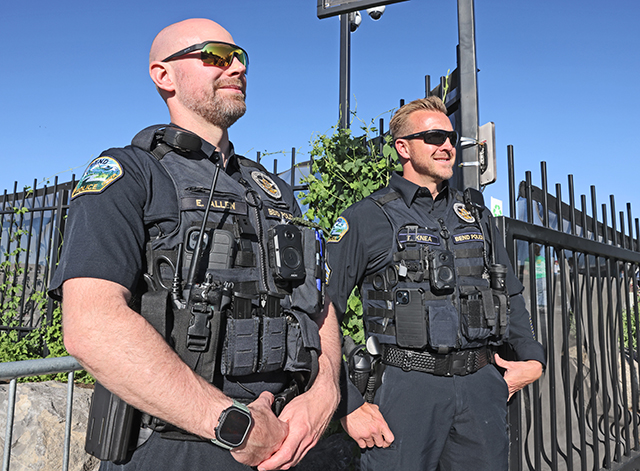Cold and flu symptoms are all around us in Central Oregon
Published 5:30 am Wednesday, January 17, 2024

- Stock image
There’s a lot of sick people right now in Central Oregon, but it’s hard to pinpoint the cause.
They could be suffering from seasonal flu. They could have a common cold. They could have COVID-19 or respiratory syncytial virus, or RSV.
No one virus is causing illness more than another, at the moment, health officials said. At the moment, none of the viral illnesses is surging, but they’re all prevalent and trending up over the past couple of weeks, said Emily Horton, Deschutes County Health Services public health program manager.
“There is a lot of sickness, but it can be a lot of different things,” Horton said. “Our common sense prevention measures are still the things we want to do. Access is a lot easier now for flu and COVID-19 vaccinations. You can get them at the same time now.”
Bend is among a dozen Oregon cities that show a sustained increase in COVID-19 being detected in wastewater samples. The same is true for seasonal flu cases in Bend, according to the Oregon Health Authority’s wastewater monitoring map.
Higher levels of the virus being detected in wastewater in Bend may be due to more visitors coming here, said Dr. Cynthia Maree, St. Charles Health System medical director of infection prevention services. That has been born out in Sunriver, where there’s a high population of transient residents, Horton said.
“The proportion of visitors/transient population in Bend is not that big, but where you do see it is more in Sunriver,” Horton said. “The variability of the data in Sunriver is because of the vacationing population we see there. That’s been consistent through most of COVID-19.”
The number of cases are significantly lower than last year, Maree said. There are only about 200 patients at St. Charles Bend in enhanced isolation, which indicates either a COVID-19 diagnoses or pending a diagnosis, Maree said. Statewide, in the week ending Jan. 6, there were 3,874 COVID-19 tests given, 402 were positive, or 10.4% positive rate. In the same period the year before, the positivity rate was 8.7%, according to the Oregon Health Authority data.
The same time last year, the health system had 1,300 patients with the same status, Maree said.
“We’re not seeing a huge surge locally,” Maree said. “It’s getting to become a normal pattern.”
There had been a bump up in cases following the holidays, she said, but few of the diagnosed COVID-19 patients have required hospitalization.
In fact, COVID-19 is becoming less severe in symptoms because more people have immunity either from getting the disease or from vaccination, she said. Patients may be seeing their primary care physicians or going to urgent care with symptoms, but their illnesses are not enough to get them sent to the hospital, Maree said.
The virus that causes COVID-19 does not seem to be seasonal, but rather behavioral, she said. When people gather indoors or spend time in close proximity for extended periods of time, the virus tends to spread, Maree said.
The best way to ward off illness, she said, is to get the latest COVID-19 vaccination and seasonal flu vaccines.
“Depending on your risk factors, you want to be careful in crowds with lots of people and take precautions,” Maree said. “Rest, eat well and wash your hands. Be mindful that we’re in respiratory illness season.”






